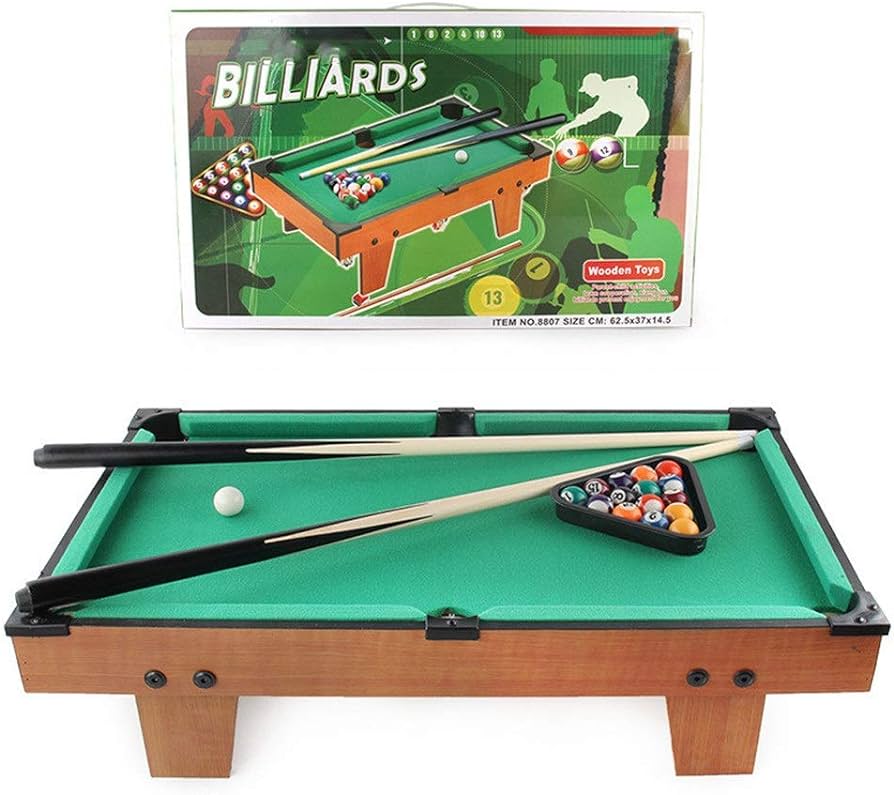In the realm of indoor gaming, few pastimes hold the timeless appeal and competitive spirit of pool. The satisfying crack of the cue ball against its targets, the strategic maneuvers, and the camaraderie shared around the table make it a favorite in bars, arcades, and homes alike. However, not everyone has the space or resources for a full-sized pool table. Enter the mini pool table, a compact rendition of the classic game that brings all the fun and challenge into a smaller package. In this article, we’ll delve into the world of mini pool tables, exploring their history, construction, gameplay dynamics, and why they continue to captivate enthusiasts worldwide.
A Brief History
The origins of pool, also known as pocket billiards, trace back to the 15th century in Europe, evolving from a lawn game similar to croquet. Over time, it migrated indoors and underwent various refinements in cue design, table construction, and rules. The modern game we know today gained popularity in the 19th century, particularly in the United States, where it became a staple of bars and social clubs.
The concept of miniaturizing pool tables likely emerged as a response to the demand for portable and space-saving gaming options. While the precise origin of mini pool tables is somewhat obscure, they gained prominence in the latter half of the 20th century, catering to enthusiasts who craved the pool experience but lacked the room for a full-sized table. Since then, mini pool tables have undergone significant advancements in design and craftsmanship, becoming more than just scaled-down replicas but rather fully functional and enjoyable gaming apparatuses in their own right.
Construction and Design
Mini pool tables typically maintain the same fundamental elements as their larger counterparts but on a reduced scale. They consist of a playing surface covered in felt, six pockets (four corner pockets and two side pockets), rails along the edges to rebound the balls, and a set of miniature balls numbered and colored like those used in standard pool. The cues are also downsized but retain the same basic design and functionality, allowing players to execute shots with precision.
Despite their smaller dimensions, mini pool tables often feature sturdy construction, utilizing materials such as wood, MDF (medium-density fiberboard), or plastic for the frame and legs. Some high-end models may incorporate additional features like adjustable leg levelers, rubber bumpers for improved ball rebound, and integrated ball return systems for added convenience.
Gameplay Dynamics
Playing on a mini pool table presents a unique set of challenges and dynamics compared to its larger counterpart. The reduced size of the playing surface necessitates more precise cue control and strategic positioning, as even slight miscalculations can dramatically alter the trajectory of the balls. Additionally, the smaller pockets require a higher degree of accuracy when pocketing balls, making each shot a test of skill and finesse.
Despite these challenges, mini pool tables offer a rewarding and immersive gaming experience suitable for players of all skill levels. Whether engaging in a casual match with friends or honing one’s abilities through solo practice, the compact nature of these tables makes them ideal for intimate gatherings, dorm rooms, offices, or any space where a full-sized table would be impractical.
Popularity and Cultural Impact
Mini pool tables have carved out a niche within the broader gaming community, appealing to both seasoned pool enthusiasts and casual players alike. Their compact size and portability make them a popular choice for recreational activities at home, while their affordability and accessibility ensure widespread adoption among consumers of all ages.
Moreover, mini pool tables have made appearances in popular culture, further cementing their status as iconic symbols of leisure and camaraderie. From movies and television shows featuring characters engaged in intense matches to their presence in bars, cafes, and game rooms worldwide, these diminutive gaming tables continue to leave a lasting impression on audiences everywhere.
Conclusion
Mini pool tables represent a delightful fusion of tradition, craftsmanship, and entertainment. Despite their smaller stature, they encapsulate all the excitement and strategy of the classic game, providing hours of enjoyment for players of every skill level. Whether as a standalone gaming option or a complement to existing recreational spaces, mini pool tables serve as versatile and engaging additions to any home or establishment. As the demand for compact and accessible gaming experiences continues to grow, these pint-sized marvels are poised to remain a beloved fixture in the world of indoor entertainment for years to come.







